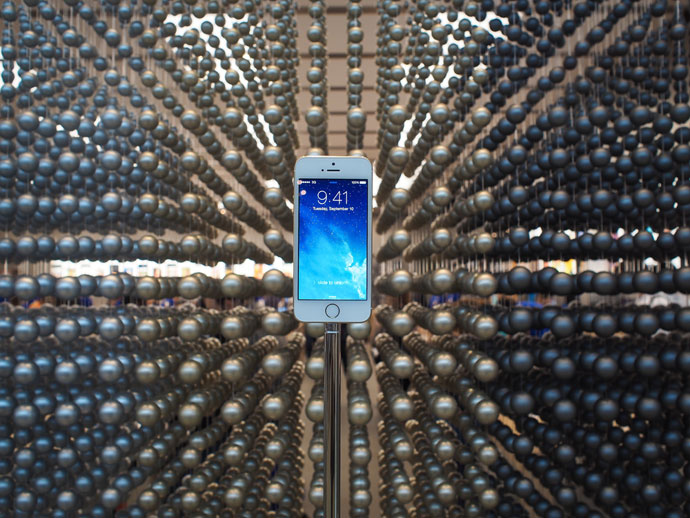10 Things You Didn’t Know About The iPhone
If you own an iPhone, you probably already know how to use it for just about anything you can think of. But even the most avid Apple fans might not know some of the finer points of the iPhone’s history and statistics. Here are 10 facts you probably didn’t know about the iPhone.
1. More Than 387 Million iPhones Have Been Sold
By September 2013, Apple had sold 387.4 million iPhones. That’s enough iPhones for every person in the United States, with 74 million iPhones to spare.
2. Icons Pay Homage To Apple History
Many of the icons on iOS are modeled after pieces of Apple history and culture. For example, the Safari Reading List icon resembles glasses worn by Steve Jobs, and the iOS Maps icon is meant to look like the neighborhood surrounding Apple headquarters.
3. iPhones Use More Energy Than Refrigerators
A study last year found that streaming an hour of video on a smartphone or tablet uses more electricity than two new refrigerators use in a year. You won’t notice all that power usage on your end, as the majority of the electricity is used by remote networks.
4. iPhones May Be The Least Private Smartphones
President Obama said he can’t use an iPhone because of security reasons and instead sticks to using a Blackberry. Exact security reasons are unclear, but there’s speculation that Obama was referring to NSA collection of consumer data. Edward Snowden alleges that Apple and several other large companies provided the government with direct access to private user data, a claim that Apple has denied.
5. Prototypes Are Worth Big Bucks
It’s no surprise that the latest prototype is always a closely guarded secret and is invaluable if it gets out ahead of time. But an iPhone from the very first generation of engineering prototypes is still worth a lot to Apple collectors. One sold recently for $1,500.
6. Hundreds Of People Have Touched Your iPhone
The iPhone’s inner hardware is immensely complex, and each device requires an assembly line of several hundred people to put together. Each iPhone 5 or 5C requires 500 assembly line workers, and each 5S requires 600 workers.
7. iPhones Almost Had A Different Name
The iPhone came close to having a different name altogether. The frontrunner was the TelePod. This combined “Tele” to denote a telephone, and “Pod,” which was carried over from the iPod instead of the now-iconic “i.” Other possible names included MicroMac, Mobi and Tripod.
8. Apple Puts As Much Thought Into Packaging As It Does Into The Device Itself
There’s a secret packaging room at Apple headquarters where designers obsess over every detail of every package. They want customers to feel exactly the right emotions when opening their new iPhones and other iDevices. In his book, “Inside Apple,” Adam Lashinsky told one designer’s story: “One after another, the designer created and tested an endless series of arrows, colours, and tapes for a tiny tab designed to show the consumer where to pull back the invisible, full-bleed sticker adhered to the top of the clear iPod box. Getting it just right was this particular designer’s obsession.”
9. Apple’s Favorite Time Is 9:41
Promotional images of the iPhone always show the time as 9:41 a.m. When Steve Jobs first announced the iPhone, his speech started at 9 a.m., and he planned for the first photo to appear 41 minutes into the speech. He made sure that first photo showed the accurate time of 9:41 a.m.
10. Someone Predicted The iPhone In 1964
Decades before the iPhone’s conception, science fiction author Isaac Asimov predicted a device very similar to what the iPhone became. He wrote, “You will see as well as hear the person you telephone. The screen can be used not only to see the people you call but also for studying documents and photographs and reading passages from books.”










































